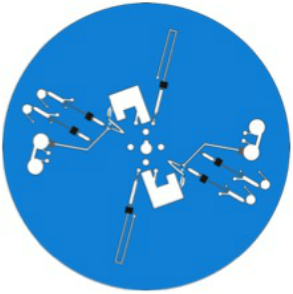Polyethylene Terephthalate Microdevices
The Landers Lab had developed a technique for fabricating microfluidic devices with complex multilayer architectures using a laser printer, a CO2 laser cutter, an office laminator, and common overhead transparencies as a printable substrate via a laser print/cut and laminate (PCL) methodology. The printer toner serves three functions; (1) it defines the microfluidic architecture, (2) acts as the bonding agent and, (3) provides printable, hydrophobic ‘valves’ for fluidic flow control. Using common graphics software, the protocol produces microfluidic devices with a design-to-device time of ~40 min. Devices of any shape can be generated for an array of multistep assays with colorimetric detection of molecular species ranging from small molecules to proteins. The simplicity of the protocol, availability of the equipment and substrate and cost-effective nature of the process make microfluidic devices available to those who might benefit most from expedited, microscale chemistry.
|
Contact Landers Research Group
jpl5e@virginia.edu (434) 243-8658 375, 379, 395 Chemistry Building McCormick Road Charlottesville, Va 22904 |


